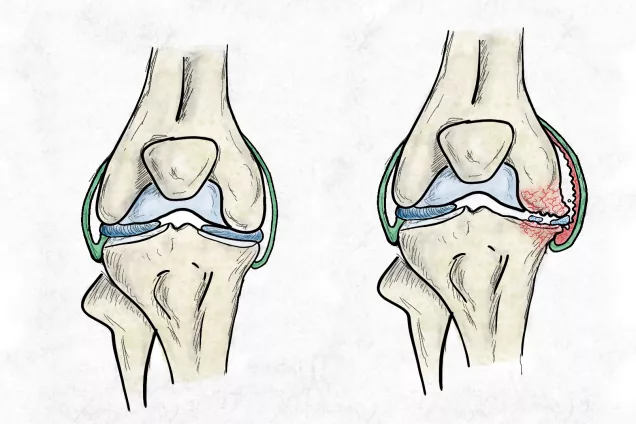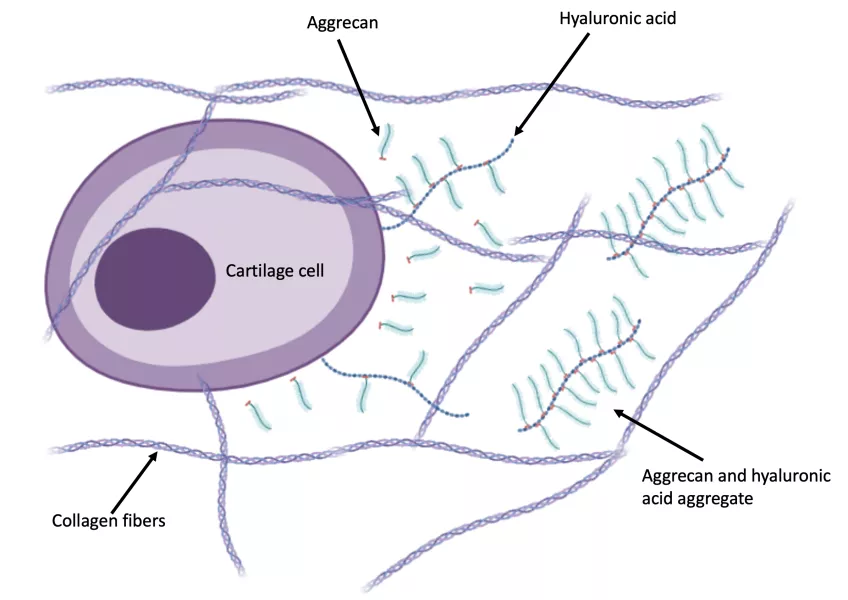What happens to the cartilage?
The articular cartilage consists of cartilage cells (also known as chondrocytes) surrounded by extracellular matrix. The extracellular matrix is a network of proteins and sugar molecules and contains a large proportion of water. The water helps to create an impact-absorbing effect in the joint and reduces joint friction. As it is the cartilage cells that produce and maintain the extracellular matrix, healthy cartilage cells are needed for the cartilage to function normally.
In the extracellular matrix, a network of the structural protein collagen can be found, working as the cartilage's "armour". Inside this "armour” lies the protein aggrecan, whose role is to bind water and keep the cartilage soft and elastic so that it swells and becomes a ”cushion" in the joint. The collagen prevents the aggrecan from absorbing too much water and swelling too much. The thickness of the cartilage is mainly dependent on the interaction between collagen and aggrecan.
Causes of imbalance in cartilage degradation
The degradation of articular cartilage in osteoarthritis (OA) is the result of an imbalance in the construction (anabolism) and the degradation (catabolism) of the extracellular matrix. This happens when the cartilage cells do not build up extracellular matrix at the same rate it is broken down. . This gradual degradation of extracellular matrix creates cartilage damage. There is no exact answer as to why this imbalance occurs but it is believed that it may be due to either oblique loading, overloading, or underloading of the joint.
Different stages of degradation
During the first stage of cartilage degradation, the aggrecan content in the cartilage decreases. However, since the collagen network is still intact, the thickness of the cartilage is not affected. During the second stage, the collagen network or the cartilage “armour” starts to break down and the amount of aggrecan in the network decreases. When this happens, less water is absorbed and the cartilage begins to thin, leading to the cartilage surface becoming soft and uneven. Over the course of many years, the cartilage in some patients disappears completely. The degradation of the cartilage (and other tissues in the joint) is slow, and therefore it is sometimes said that OA is a degenerative disease. Despite this, OA is no longer considered a wear and tear disease.

What happens to the joint?
Read more about what happens inside an OA affected joint and how the entire joint is affected.


